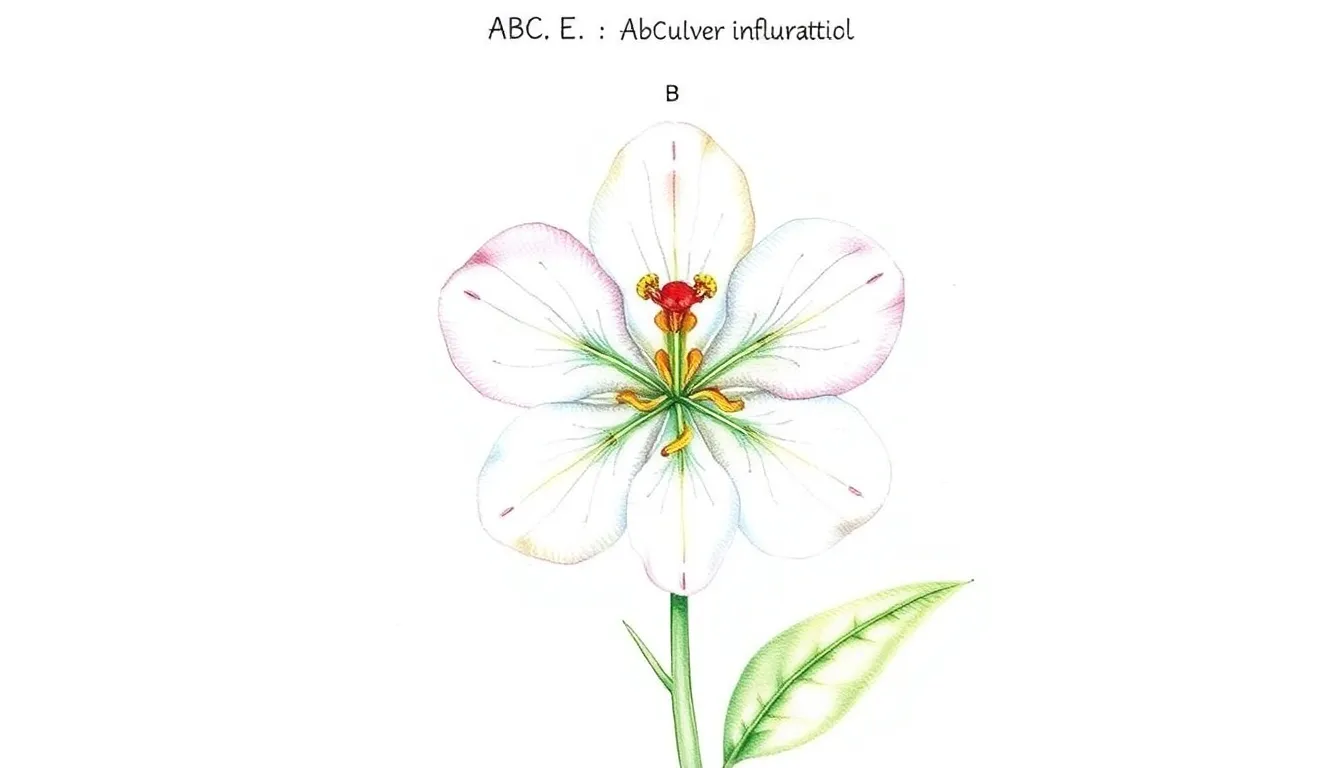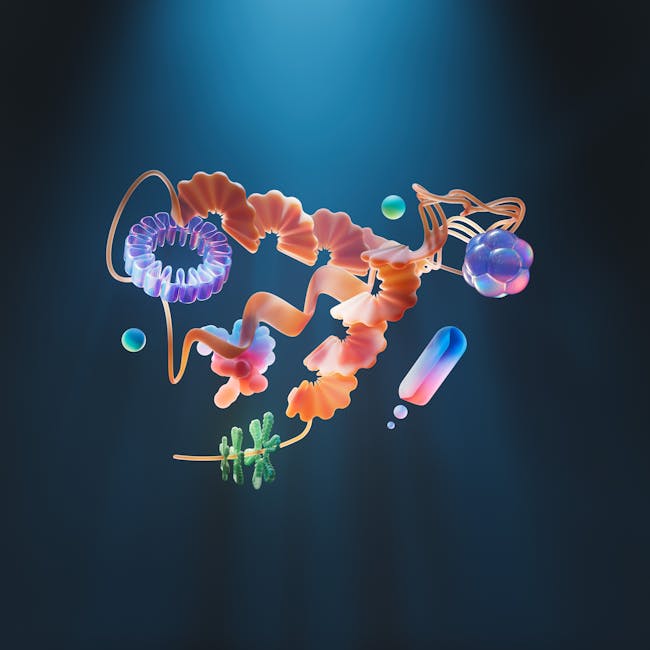ABC flower model explains how patterning in plant meristems yields a recognizable flower, the reproductive organ of flowering plants. As you read, we trace the molecular signals, the transition from vegetative to floral states, and the gene interactions that sculpt sepals, petals, stamens, and carpels into a coherent structure together.
Table of Contents
- ABC flower model: Introduction and Meristem Basics
- ABC flower model: Flower Meristem Identity
- ABC flower model: A, B, C gene functions
- ABC flower model: D and E extensions
- ABC flower model: Phylogeny and MADS-box
- ABC flower model: Mutations and phenotypes
- ABC flower model: Evolution across species
- ABC flower model: Regulation by FT, LFY, SOC1
- ABC flower model: Experimental methods and data
- Final Solution
Read More
ABC flower model explains how patterning in plant meristems yields a recognizable flower, the reproductive organ of flowering plants. As you read, we trace the molecular signals, the transition from vegetative to floral states, and the gene interactions that sculpt sepals, petals, stamens, and carpels into a coherent structure together.
ABC flower model: Introduction and Meristem Basics
Within the ABC flower model framework, the shoot apical meristem acts as a dynamic canvas where identity signals set the trajectory toward a flower. Here, vegetative cues and developmental timing converge, guiding cells toward organized organogenesis. The model translates complex genetics into a tangible botanical pattern that students grasp.
External signals such as photoperiod and hormonal shifts gate the switch from a vegetative to a flowering state, a critical step before the meristem commits to floral fate. The ABC flower model emphasizes timing, signaling networks, and spatial cues that sculpt how four primordial whorls emerge.
ABC flower model: Flower Meristem Identity
The floral meristem within the ABC flower model is a determinated structure, meaning its cells cease dividing after specification. This contrasts with vegetative meristems and ensures the organized production of sepals, petals, stamens, and carpels in a fixed sequence, enabling reliable flower architecture.
Morphologically, the verticils form in acropetal order, with each whorl receiving identity signals shaped by A, B, and C functions. The ABC flower model thus links molecular activity to the visible arrangement of floral organs, a cornerstone of plant developmental genetics.
ABC flower model: A, B, C gene functions
In this paradigm, A function specifies sepal identity and, with restricted C activity, the outer whorls become sepals. Petals arise when A and B co-operate in the second whorl, while the C function asserts stamen and carpel fate in the inner whorls; loss of C yields homeotic petal replacement.
The B function allows petal formation in the second whorl and, in the third, supports stamen identity, with the bouquet of interactions creating distinct organ identities. The competitive antagonism between A and C ensures mutually exclusive assignments, defining a classic gene network in floral biology.
ABC flower model: D and E extensions
D and E functions extend the original trio, specifying ovule identity and broadizing across verticils. D governs ovule formation, while E participates in all verticils to ensure coherent floral development. Mutations affecting D or E reveal layered regulatory logic beyond the canonical A-B-C interactions.
MADS-box gene products underpin these signals, and functional studies across species illustrate partial redundancy and specialization. By incorporating D and E into the model, researchers capture how ovule maturation and complete floral unity emerge from a shared genetic toolkit.
ABC flower model: Phylogeny and MADS-box
Goethe’s foliar ideas intersect with modern genetics as the ABC model rests on MADS-box transcription factors. The A, B, and C functions map to AP1, AP3, AG and their homologs, forming a regulatory triangle that echoes both evolutionary history and current molecular understanding.
This section highlights how model organisms like Arabidopsis thaliana and Antirrhinum majus provided the genetic scaffolding. The ABC framework translates homeotic gene expression into organ identity, with experiments showing how knocking out specific genes reassigns floral tissues.
ABC flower model: Mutations and phenotypes
Mutations in A, B, or C-type genes generate classic homeotic phenotypes: outer whorls become reproductive-like, inner whorls mis-specify, and transgenic lines reveal altered whorl boundaries. These results corroborate the ABC model’s central claim that small gene changes yield large morphological shifts.
Comparative genetics across species demonstrates conserved logic with lineage-specific twists. Observations of Petunia, Antirrhinum, and Arabidopsis deepen our understanding of how A, B, C gain context through cofactors and regulatory networks, reinforcing the universality of the floral identity program.
ABC flower model: Evolution across species
Across angiosperms, the four-verticil arrangement remains a touchstone for comparing ABC logic. The modified ABC model in Liliaceae and other monocots attests to evolution reconfiguring B activity, yielding petaloid variations while preserving core A and C functions.
Phylogenetic evidence ties gene duplications, functional divergence, and regulatory network rewiring to floral diversity. The ABC framework thus becomes a lens for understanding how robust genetic circuits adapt across lineages while maintaining recognizable floral architecture.
ABC flower model: Regulation by FT, LFY, SOC1
Floral transition in Arabidopsis hinges on networks including FLOWERING LOCUS T, LEAFY, and SOC1, integrating photoperiod, vernalization, and gibberellins. The ABC flower model sits atop these signals, translating like a conductor guiding meristem identity toward a timely floral program.
Experimental perturbations of FT-LFY-SOC1 pathways reveal how upstream regulators constrain A and C functions to ensure proper whorl identities. In this view, ABC interactions are context-dependent, dependent on hormone levels, scene-setting signals, and chromatin states that tune transcription factor access.
ABC flower model: Experimental methods and data
Modern approaches—reverse genetics, RNA interference, and comparative transcriptomics—map the tissue-specific expression of A, B, C, D, and E gene families. Serial analysis methods reveal spatial patterns that align with the model’s predictions, offering a roadmap to identify key regulators of floral identity.
Cloning and functional assays across species validate the ABC paradigm while revealing its flexibility. When mutations disrupt multiple functions, phenotypes challenge simplistic views, prompting refined models that accommodate lineage-specific shifts and emergent regulatory layers beyond classic A-B-C rules.
Final Solution
The ABC flower model remains a robust framework for understanding how gene networks sculpt floral identity. By tracing A, B, C and their extending functions through D and E, we see a coherent developmental logic emerge that explains organ placement, timing, and diversity across angiosperms.
Final takeaway: the ABC flower model provides a vocabulary to predict outcomes of genetic perturbations, guiding both basic science and crop improvement. As research expands, the model adapts, maintaining relevance while welcoming new regulators that refine floral architecture.
| Aspect | Summary |
|---|---|
| Key Concept | ABC flower model explains how A, B, C gene interactions pattern floral organs in a determinate floral meristem. |
| Meristem Type | Floral meristem is determinate; vegetative meristem continues to divide until flowering cues trigger identity shifts. |
| Gene Functions | A specifies sepals, A+B specify petals, B+C specify stamens, C specifies carpels; mutual antagonism maintains distinct identities. |
| D and E Roles | D governs ovule identity; E acts across all verticils to ensure floral unity. |
| Historical Context | Formulated by Haughn & Somerville (1988); built on MADS-box transcription factors. |
| Model Organisms | Arabidopsis thaliana and Antirrhinum majus provided foundational evidence. |
| Mutations | Mutations yield homeotic phenotypes, confirming gene identity assignments. |
| Phylogeny | Modified ABC in monocots shows evolutionary flexibility across lineages. |
| Applications | Insights inform breeding and genetic engineering around flower formation. |
We also Published
RESOURCES
- ABC model of flower development – Wikipedia
- The ABC model of floral development – ScienceDirect
- Reflections on the ABC model of flower development
- Reflections on the ABC model of flower development | The Plant Cell
- The ABC Model and its Applicability to Basal Angiosperms – PMC
- The ABC Model of Flower Development – Center for Book Arts
- The ABC model of flower development: then and now | Development …
- The overall regulatory network and contributions of ABC(D)E model …
- 30.12: Plant Development – Genetic Control of Flowers – Biology …
- Flower Bracelet: White







0 Comments